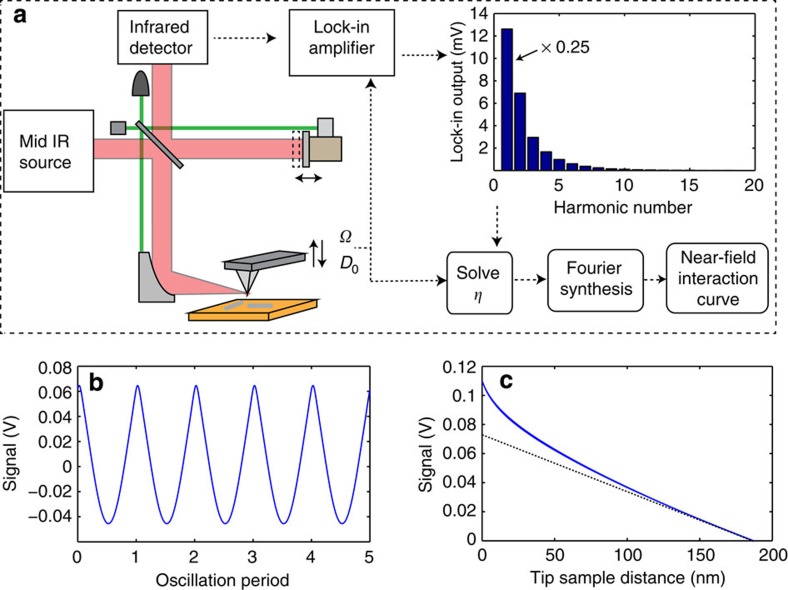Scattering-type scanning near-field optical microscopy supplies entry to super-resolution spectroscopic imaging of the surfaces of a spread of supplies and nanostructures.
In addition to chemical identification, it permits observations of nano-optical phenomena, resembling mid-infrared plasmons in graphene and phonon polaritons in boron nitride.
Despite the excessive lateral spatial decision, scattering-type near-field optical microscopy will not be capable of present traits of near-field responses within the vertical dimension, regular to the pattern floor.
Here, we current an correct and quick reconstruction methodology to acquire vertical traits of near-field interactions. For its first software, we investigated the certain electromagnetic subject part of floor phonon polaritons on the floor of boron nitride nanotubes and located that it decays inside 20 nm with a substantial part change within the near-field sign.
The methodology is anticipated to supply characterization of the vertical subject distribution of a variety of nano-optical supplies and constructions.

Non-Invasive Multi-Dimensional Two-Photon Microscopy permits optical fingerprinting (TPOF) of immune cells.
Mucosal surfaces are continually uncovered to pathogens and present excessive immunological exercise. In a broad selection of ocular floor issues irritation is frequent, however underlying mechanisms are sometimes not totally understood.
However, the primary scientific downside is that inflammatory processes are tough to characterize and quantify as a result of impossibility of repeated tissue probing of the fragile ocular floor. Therefore non-invasive optical strategies are thought to have the potential for intravital investigation of ocular floor irritation.
This examine demonstrates the overall potential of two-photon microscopy to non-invasively detect and discriminate key gamers of irritation within the ocular floor by utilizing intrinsic fluorescence-based options with out the need of tissue probing or the use of dyes.
The use of wavelength dependent measurements of fluorescence lifetime, along with autofluorescence depth permits a useful differentiation of remoted immune cells in vitro at excitation wavelengths between 710 to 830 nm. Mixed cell cultures and first in vivo outcomes point out the use of excitation wavelength of 710 to 750 nm for additional experiments and future use in sufferers.
Two photon based mostly autofluorescence options of immune cells permits non-invasive differentiation.
